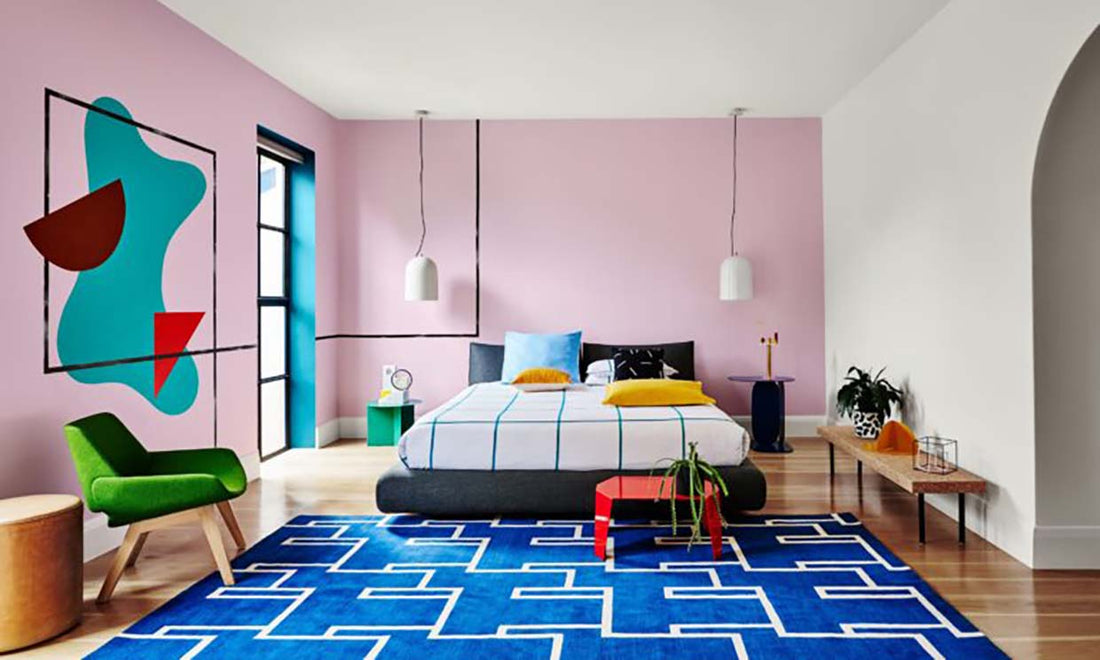What does classical Rome have to do with Pop culture? And Dylan with geometry? The answer lies in the group Memphis.
The Memphis style is a philosophy that moves away from the sober and rationalist patterns that dominated much of the twentieth century. Its greatest exponent was Ettore Sottsass, founder of the collective in 1980. Through colorful, creaky, and extreme proposals (a throne-chair christened Roma), these designers shook the foundations of good taste. They raised all sorts of questions about the mission of contemporary design. "A table may need four legs to function, but no one says all four have to be the same," Sottsass went so far as to say. By the way, the Dylan thing and the Memphis thing, which is a whole, is because Stuck Inside of Mobile with the Memphis Blues Again was the song playing on the afternoon of December 11, 1980, when the collective was founded: Welcome to the Memphis group's "just because."
The first collection of the collective -which, in addition to Ettore, included Hans Hollein, Arata Isozaki, Andrea Branzi, and Nathalie du Pasquier, among others-, was presented to the world at the Milan Furniture Fair back in September 1981. The response from the public and experts was as ambiguous as it was mediatic: either you loved these colorful and quirky pieces or hated them. But, on the other hand, something usually happens with those modes and forms that break the rules and consensuses.
After years of austerity in design - imposed by modernity - the furniture and objects designed by Sottsass, among others, proposed an exuberant philosophy that questioned all preconceived ideas about Good Taste... in capital letters. The objective? To call on designers and creatives to let their imaginations run wild.
But where did all this fuss come from? In the hands of these free and daring designers, objects took on unexpected shapes, in no way dependent on their function. Based on geometric figures such as cubes, spheres, or cylinders - used, of course, asymmetrically - they twisted proportions bordering on the baroque anarchy of kitsch. "Why to maintain notions like the good or bad taste?" they seemed to ask themselves constantly. And nothing better than a glance at the surfaces of their pieces to doubt that dichotomy that had dominated bourgeois design: crazy leopard prints; new-fangled geometric patterns; unlimited colors. Logic? That of creativity. Memphis advocated the disappearance of the boundaries between cheap and expensive, cultured and popular, art and industry.
In terms of colors, they ignored the preference for black - so dear to the followers of the Bauhaus, the first design school of the 20th century that advocated functionality and industrial craftsmanship - or natural tones. Instead, they developed a rabid and striking palette: reds, yellows, blues, greens - the more garish, the better - juxtapose and complement each other because they must provoke a response: emotions.
The truth is that, despite the controversy they dragged, we have seen a return of the vocabulary of the Memphis collective in recent years. We saw it in the exhibition that the Design Museum in London dedicated to them in 2015. In addition, Nathalie Du Pasquier is being sought after by leading design companies such as Wrong for Hay, La Chance, or American Apparel.

Pepa Casado D'Amato
At the last Fiera Milano 2016, we could see that the Memphis style of the 80s is once again a trend. Geometric shapes for wall coverings but also present in furniture, such as the Chroma table lamp (pictured), designed by Arturo Erbsman for Roche Bobois and made of colored photographic filters. More Memphis influence in today's design? Notice the surfaces decorated with large geometric shapes such as triangles or semicircles, rhomboidal and hexagonal figures in a kind of visual feast.
We also perceived the Memphis heritage in the - never-ending - graphic combinations of black and white. Whether in carpets, wallpapers, furniture upholstery, laminates, or flooring, black and white appeared again and again in the group's designs and many of the recent interior design proposals.

